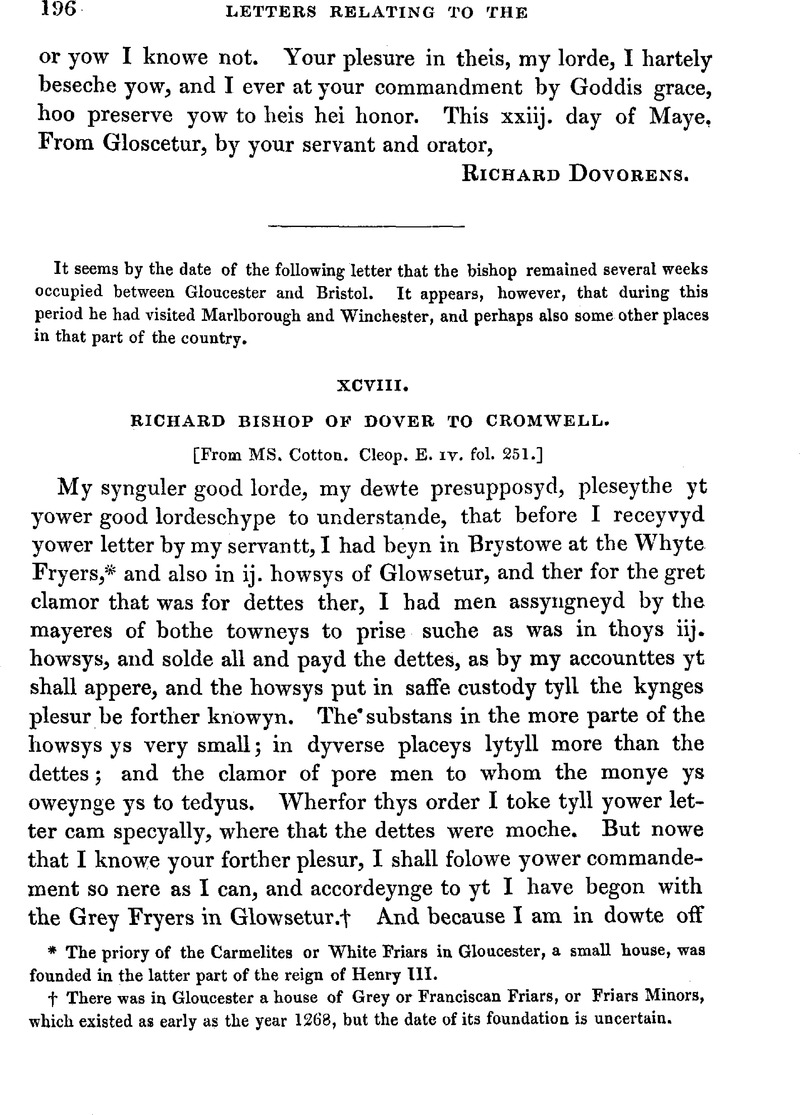No CrossRef data available.
Article contents
XCVIII. Richard Bishop of Dover to Cromwell
Published online by Cambridge University Press: 23 February 2010
Abstract

- Type
- Chapter II. From the Dissolution of the Smaller Houses to the Passing of the Act for the Dissolution of the Larger Monasteries
- Information
- Camden Old Series , Volume 26: Three Chapters of Letters Relating to the Suppression of Monasteries , September 1843 , pp. 196 - 202
- Copyright
- Copyright © Royal Historical Society 1843
References
page 196 note * The priory of the Carmelites or White Friars in Gloucester, a small house, was founded in the latter part of the reign of Henry III.
page 196 note † There was in Gloucester a house of Grey or Franciscan Friars, or Friars Minors, which existed as early as the year 1268, but the date of its foundation is uncertain.
page 198 note * The house of Black or Dominican Friars in Winchester, was founded by Peter de Rupibus, or Derroches, bishop of Winchester, in 1221.
page 198 note † I find no account of this house in the Monasticon. It was against the order of the friars to possess lands ; but the gardens, which they let out on leases, were allowed to pass by a quibble.
page 199 note † The house of the black or Dominican friars in Gloucester was founded about 1239. The last prior was John Raynolds.
page 199 note † Hereford.
page 200 note * The house of the white friars in Marlborough was founded by two merchants in 1316.
page 202 note * The convent of the Grey Friars at Winchester is said to have been founded by Edward III.
page 200 note † This house stood outside the town : the Austin friars settled here in the time of Edward I.




